Spain, as a country, is known for its varied landscapes, excellent cuisine, unique culture, and glorious year-round weather, and the southern region of Andalusia is no different. Andalusia features a wealth of sights and attractions, from the big names like Seville, Malaga, and Marbella, to lesser-known gems like Pueblos Blancos, Ubeda, and Baeza.
I’ve been lucky enough to visit this region on numerous occasions and I’ve compiled my list of the best destinations to visit in Andalusia so that you can start planning the trip of a lifetime in sunny Spain!
Table of Contents
Map of the Best Places to Visit In Andalucia
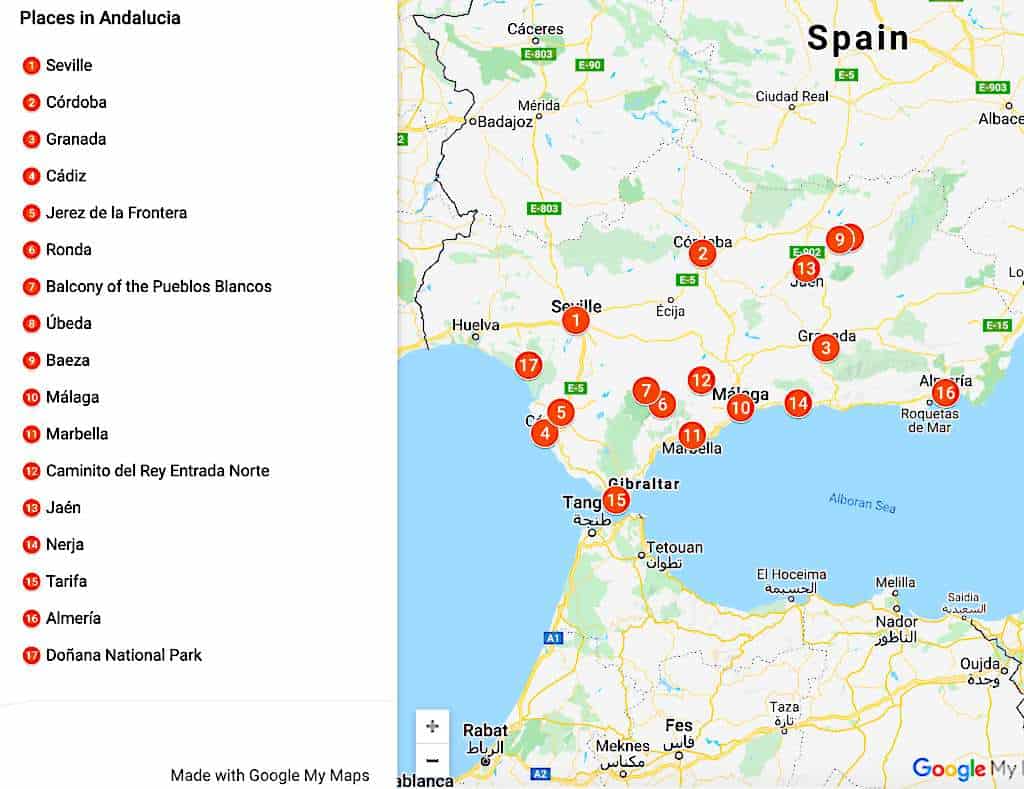
17 Destinations to Visit in Andalucia
1. Seville
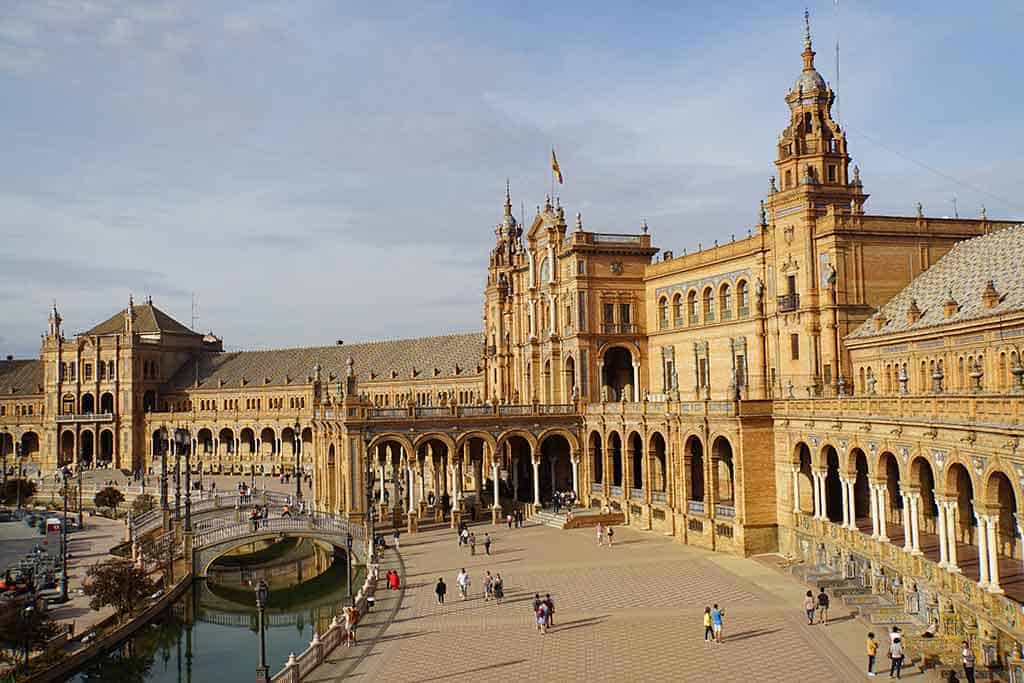
The Andalusian capital of Seville is a must for those seeking a city break packed with culture and cuisine. This stunning city is full of historical sights, splendid cathedrals, picturesque plazas, and parks galore so you are sure to have a trip to remember!
Seville boasts breath-taking buildings at every turn, with the impressive UNESCO World Heritage Site, Seville Cathedral, being a must-see during your trip. This cathedral is the third-largest in the world and it features remarkable artwork as well as the tomb of Christopher Colombus, the world-famous explorer. The Giralda, at the top of the cathedral bell tower, also offers visitors an incredible 360°-views of the city and is a great place to start your trip. Other must-see sights include the Alcazar Palace, the Plaza de España and the Maria Luisa Park.
Check out:
One day in Seville
A two day Seville itinerary
The best day trips from Seville
What to do in Seville in October
A food tour in Seville
2. Cordoba
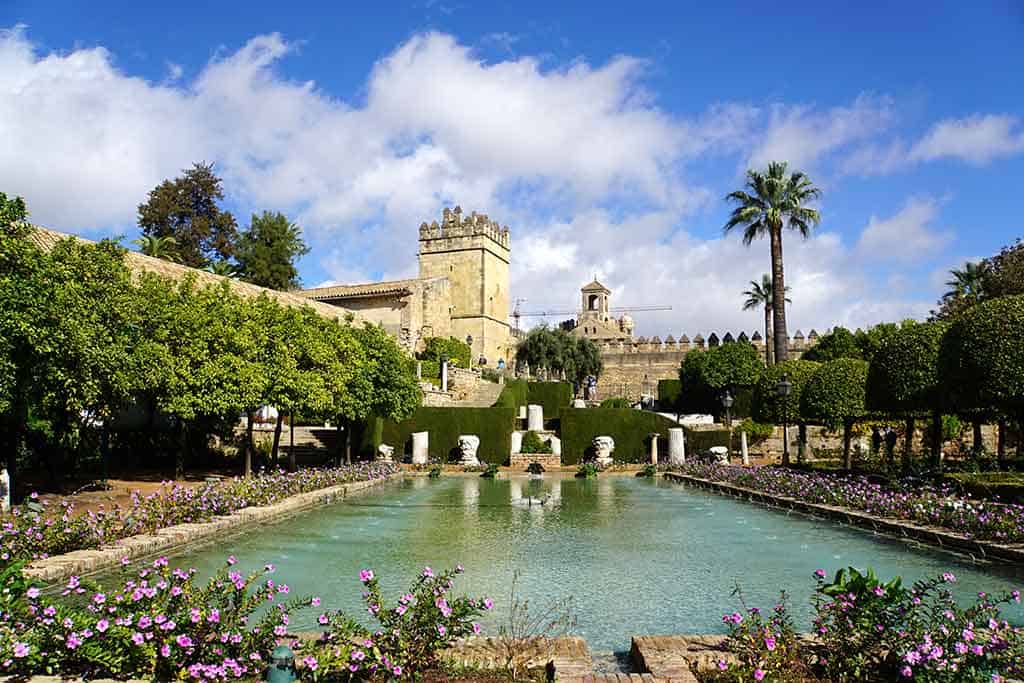
If you have time during your adventures in Andalusia, take a day trip to the town of Cordoba for more incredible historical sites such as the Mezquita (Mosque-Cathedral) of Cordoba and the Alcázar of Córdoba. Both of these are wonderful works architecture and give you a great insight into the history of both the city and the region as a whole. The Moorish design features of the Mezquita include a colorful arcaded hypostyle hall, impressive domes and detailed mosaics and frescoes and it is fascinating to see how this building was used as both a cathedral and a mosque.
The rest of the city of Cordoba is spectacular too, with a beautiful Roman arched bridge, quaint cobbled streets, and terracotta-roofed houses that allow every backdrop to look like a postcard!
Check out:
Things to do in Cordoba
How to spend one day in Cordoba
3. Granada
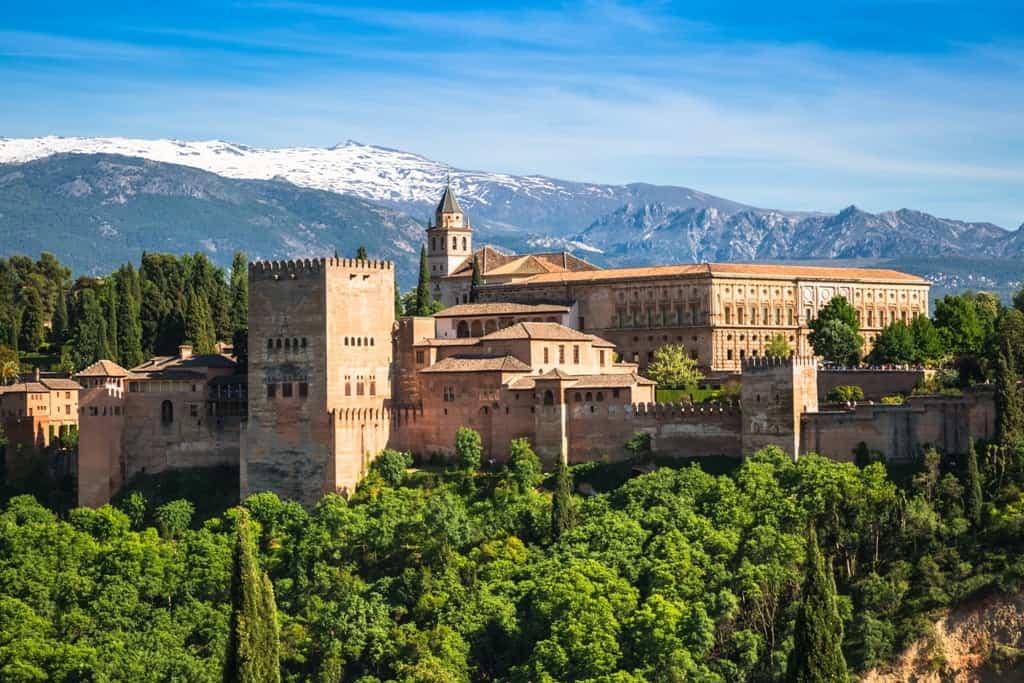
The town of Granada has an incredible combination of old and new architecture and activities which makes it a great destination for the whole family. Whether you want to witness ancient Moorish architecture, hang out modern bars and cafes, visit the Science Park or simply shop ‘til you drop, Granada has you covered.
The palace complex of the Alhambra is arguably the most famous site in Granada and it’s sure to enchant even the most discerning traveler. Lying atop the hillside overlooking Granada, Alhambra is a palace, fortress, and town in one which manages to combine Roman, Renaissance and Nasrid Andalusian architecture with elegance and ease.
Granada also boasts the Bañuelo Arab baths, the Carrera del Darro, the Generalife Gardens and the Granada Cathedral which are all worth a visit.
Check out: 2 day Granada itinerary
4. Cadiz
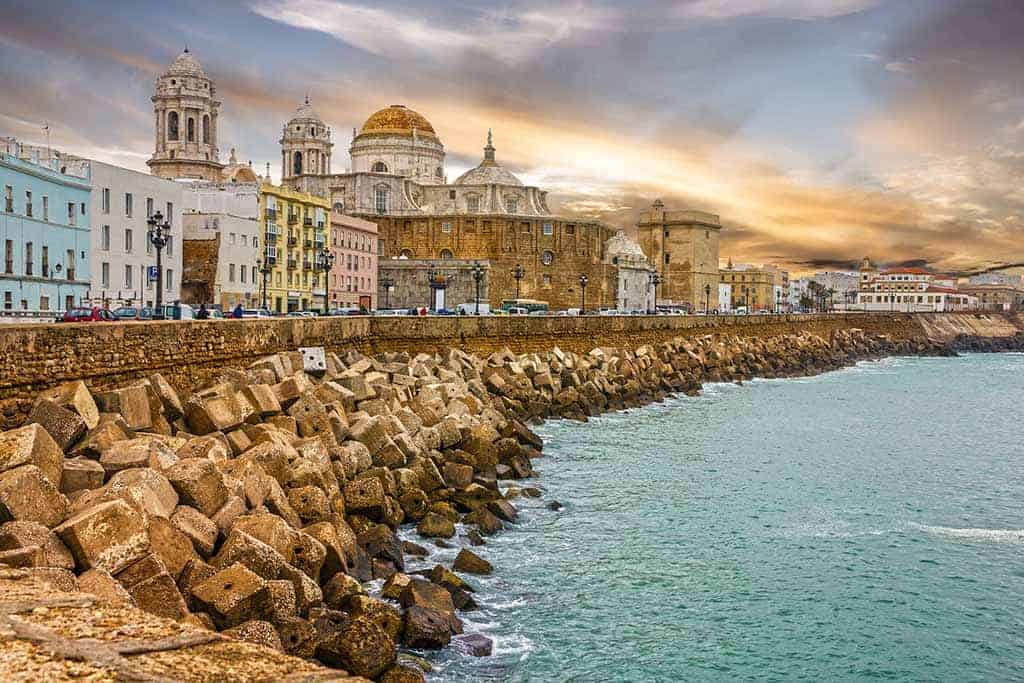
Cadiz, the capital of the Costa de la Luz, is a fairly laid-back city that is often overlooked in favor of more famous spots such as Seville and Marbella. However, Cadiz certainly has some sights that make it an awesome destination in its own right. From Blue Flag beaches like Playa La Caleta and Playa de la Victoria to attractions such as the Castle of San Sebastián, the Torre Tavira and the Cádiz Cathedral, there’s really something for everyone.
Being located on the Atlantic ocean, Cadiz is also a top location for delicious seafood dishes such as paella and the catch of the day deep fried and served up with a squeeze of lemon and a hearty glass of chilled white wine!
5. Jerez de la Frontera
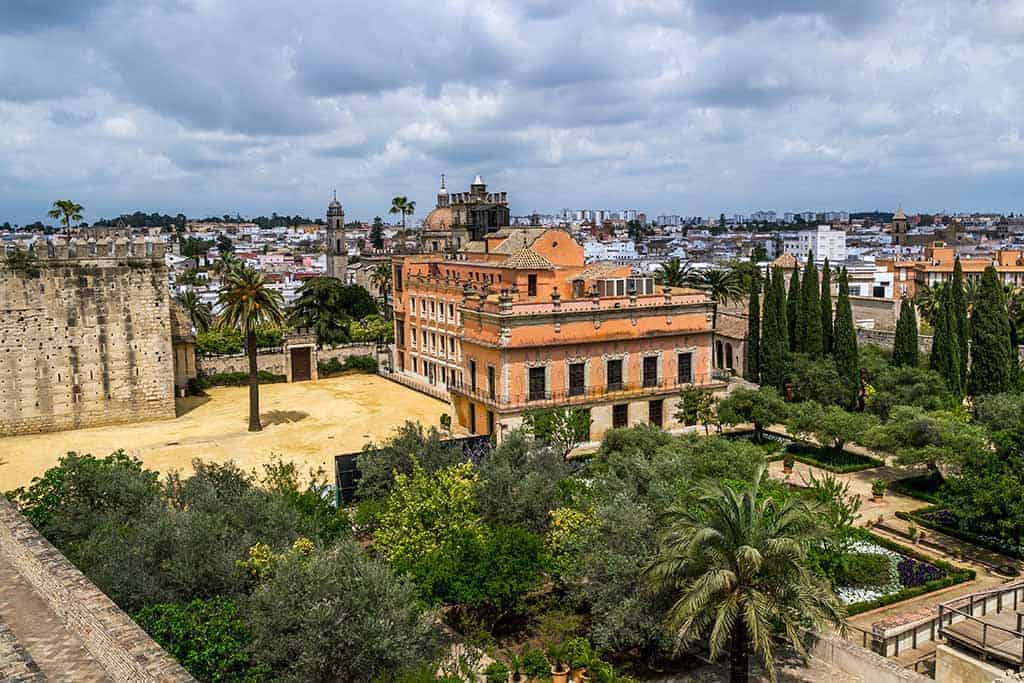
Many believe that Jerez de la Frontera is Andalusia through and through with traditional horse culture, fiery flamenco and spectacular sherry production giving Seville and Cádiz a run for their money. However, alongside these classic Andalusian traits, Jerez, as it’s more colloquially know, also has a modern side that is loved by locals and tourists alike. With modern fashion brands, stylish bars, and a burgeoning gastronomic scene, Jerez is one for the bucket list if you’re seeking something a little off the main tourist trail.
Start your time here by exploring the 12th century Alcazar Almohade Jerez de la Frontera to learn about the history of the city and the region, before heading back into the main town to explore the cathedrals, markets, parks, and museums. Spend your evening enjoying tapas and flamenco or a horse show. The next day can be spent exploring the Bodegas around the city, wineries producing some world-class sherry. If you have time, try to head to the Convento de Santo Domingo and the Cartuja de Jerez too!
6. Ronda

Ronda is a historic Andalusian town that is well worth a visit, most notably to see the dramatic layout of the town that is perched on either side of the El Tajo gorge in the Sierra de las Nieves National Park.
Carved out by the Río Guadalevín, the steep canyon creates an impressive landscape, with old and new parts of the settlement connected by the towering Puente Nuevo bridge (one of the most visited landmarks in all of Andalusia).
Aside from the bridge, Ronda is also known for its slightly dark past and for being the town that pretty much invented modern bullfighting. The grand bullring is now only used once a year during the annual September Feria bullfight, but regardless of your views on the sport, the amphitheater is still a must-see!
Ronda is split into two main sections with the new side being a hub of shopping, eateries, and attractions while the old town largely dates from Islamic times and features stunning buildings such as The Moorish Palace (La Casa del Rey Moro), the Arab Baths and the city wall fortifications.
Check out: Things to do in Ronda
7. Pueblos Blancos

Pueblos Blancos or White Villages is a name given to a collection of small towns across Andalusia that feature whitewashed, terracotta-roofed buildings, bundled together to create a quaint backdrop, not too dissimilar to the Greek Islands!
These quiet, hilltop villages are usually nestled into the surrounding mountainous landscapes with landmark churches, castles, and squares making each one slightly different from its neighbor. While it’s unlikely you’ll visit all of the Pueblos Blancos during your trip, there are a few that are particularly special that is worth a mention. Setenil de las Bodegas is a village known for growing out of cliff-enclosed cave dwellings, a history that can clearly be seen today by looking at the huge rocky overhangs that look as though they have landed on top of modern houses when in fact, they were the predecessors! Another notable town is Salobreña, a castle-topped town with stunning views across the Mediterranean.
Check out: A guide to the Pueblos Blancos of Andalucia
8. Ubeda
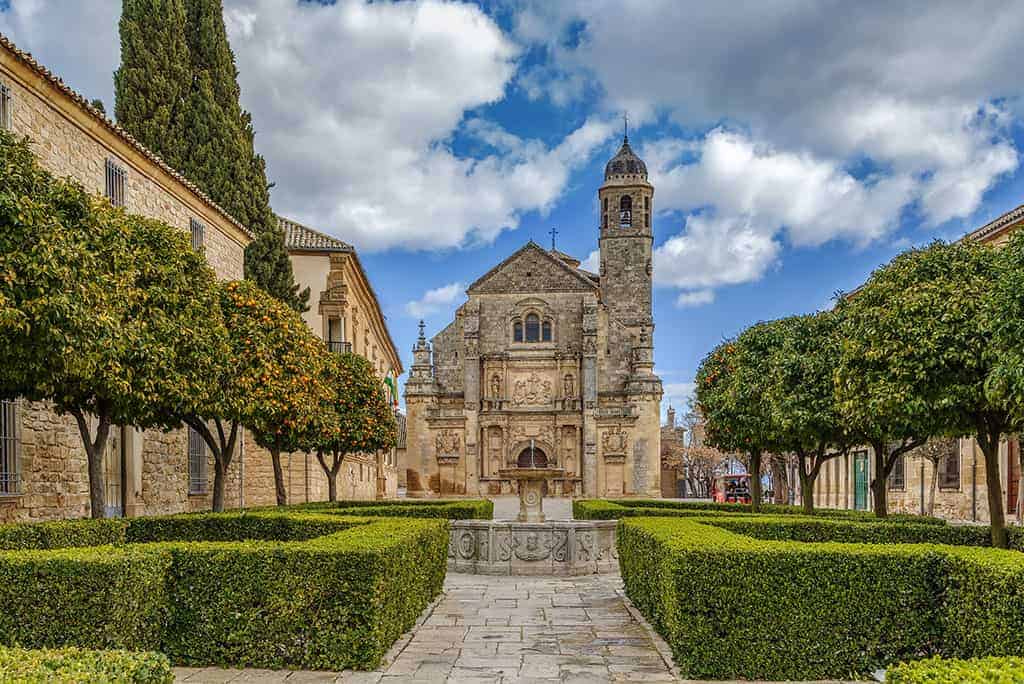
The town of Ubeda in the Jaen province is known for its collection of Renaissance palaces, churches and squares such as the pristine Plaza de Vázquez de Molina which hosts the imposing Palacio de las Cadenas. Unlike the quaint Pueblos Blancos for which Andalusia is known and loved, Udeba has a more classically Castilian feel, with large granite buildings instead of sweet whitewashed houses.
Most travelers tend to visit both Ubeda and Baeza on one combined trip, taking in impressive architecture in each Centro Historico. The top sights of Ubeda include the Holy Chapel of the Saviour, the Hospital de Santiago, Santa Maria de los Reales Alcazares and the Palacio de Vela de los Cobos.
9. Baeza
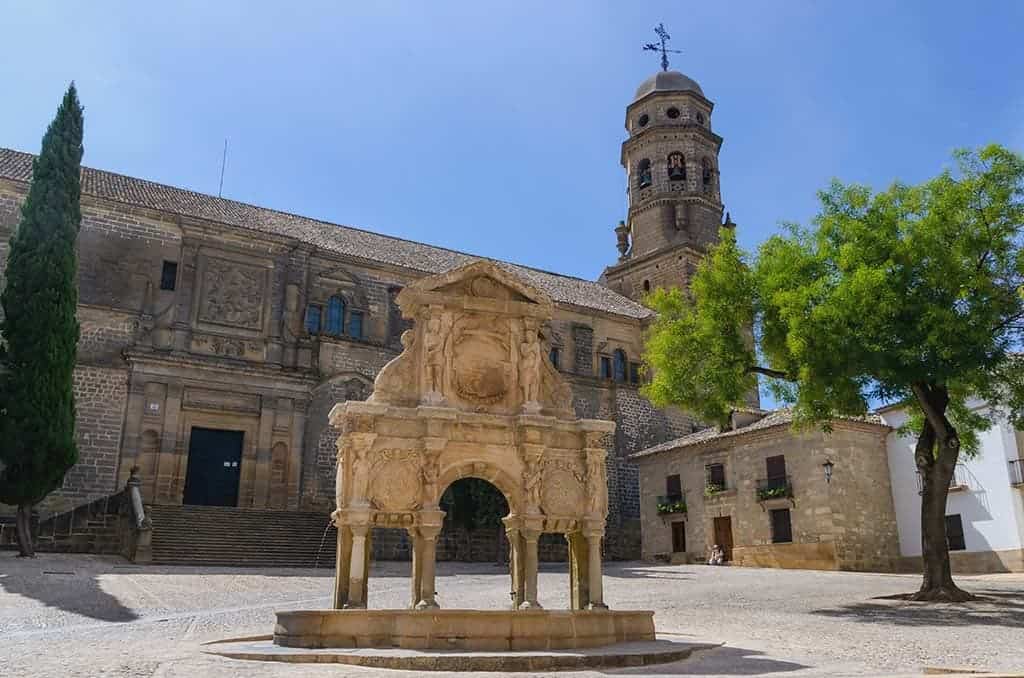
Baeza is another remote Castilian-style town in the heart of Andalusia, that along with Ubeda makes up a twinned UNESCO World Heritage Site. Baeza is the smaller of the two towns but is still worth a visit in its own right thanks to the beauty of buildings such as the Palacio de Jabalquinto, the Baeza Cathedral, the Iglesia de Santa Cruz and the Fuente de Santa Maria.
You will notice a distinct difference between the main Moorish towns of Andalusia and the markedly Christian Baeza, as this is one of the first towns that fell to the Christians in around 1227. This makes it an interesting contrast to the likes of Seville and Granada, and it’s often favored by those who prefer a more Western style of architecture.
10. Malaga
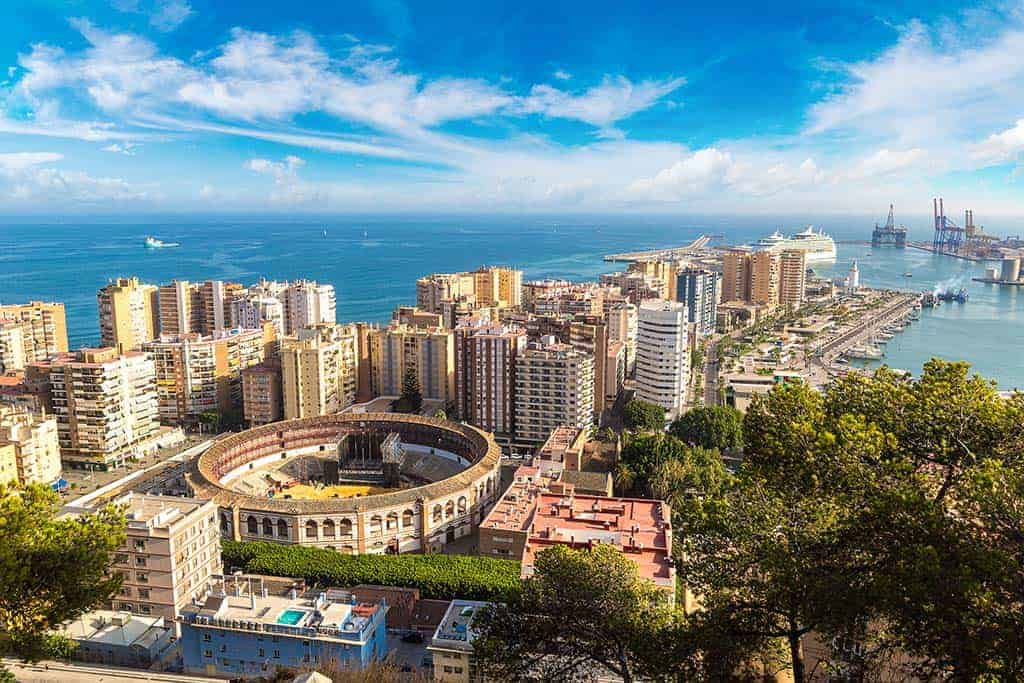
While many people think of Málaga as being a package holiday town of high-rise hotels and nightclubs, it’s important to point out that the main historic city center actually features a wealth of culture, an array of interesting architecture and a new art scene that is just waiting to be explored.
Málaga includes impressive sights such as the Arabic Alcazaba fortress in the center of the town, a large Roman Amphitheatre, the recently-opened Centre Pompidou Málaga and a Picasso Museum that will delight fans of this Spanish painter.
Málaga is also an up-and-coming hotspot for foodie lovers, with markets offering up fresh produce and snacks, insightful food tours and tapas bars galore that provide visitors with a welcome place to relax with a drink and a bite to eat!
11. Marbella
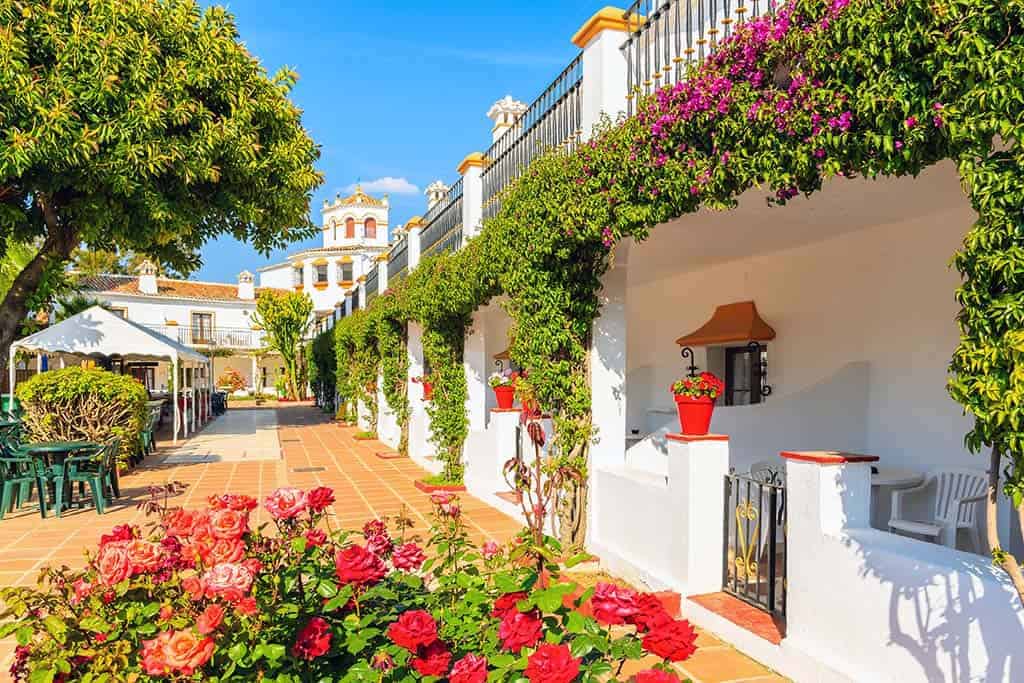
The chic city of Marbella is one of the most famous towns in Andalusia, mainly because it is thought to be southern Spain’s answer to St Tropez! This hotspot on the Costa del Sol features a whole host of stylish hotels, top-end restaurants, blingy boutiques and boozy beach clubs hosting top DJs from around the world. While this may not be to everyone’s taste, it’s definitely a go-to place to see and be seen!
There is a slightly less flashy side to Marbella though which includes the picturesque casco antiguo (old town), complete with whitewashed winding streets, balconied buildings and lively terrazas that bring about a bit of local culture.
It’s fun to see both sides of the city spending one evening at an extravagant megaclub and another sitting out on a plaza watching passionate flamenco dancers flaunt their moves!
12. Caminito del Rey
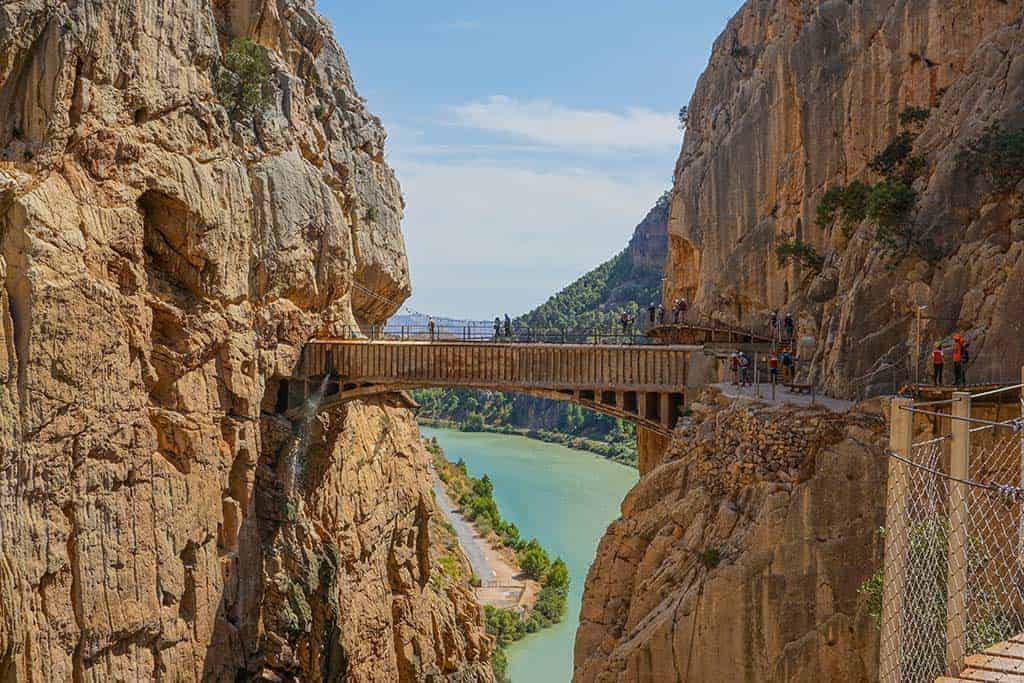
The Caminito del Rey, or King’s Walk, is one of the most renowned hiking trails in Andalusia and is a must for nature lovers and walkers. While the route is not the danger trail that it once was (think climbing ropes and concrete catwalks suspended above the ravine), the Caminito del Rey is now a much loved and much safer attraction.
The trail makes its way from the dam at one end, through the El Chorro Gorge (La Garganta del Chorro), past waterfalls, cliff-faces and sections of glass floor, towards the hanging bridge that floats above the Balconcillo de los Gaitanes. This is a pretty thrilling walk, and not for the faint-hearted, but if King Alfonso XIII could do it, then I guess we all can too!
13. Jaen
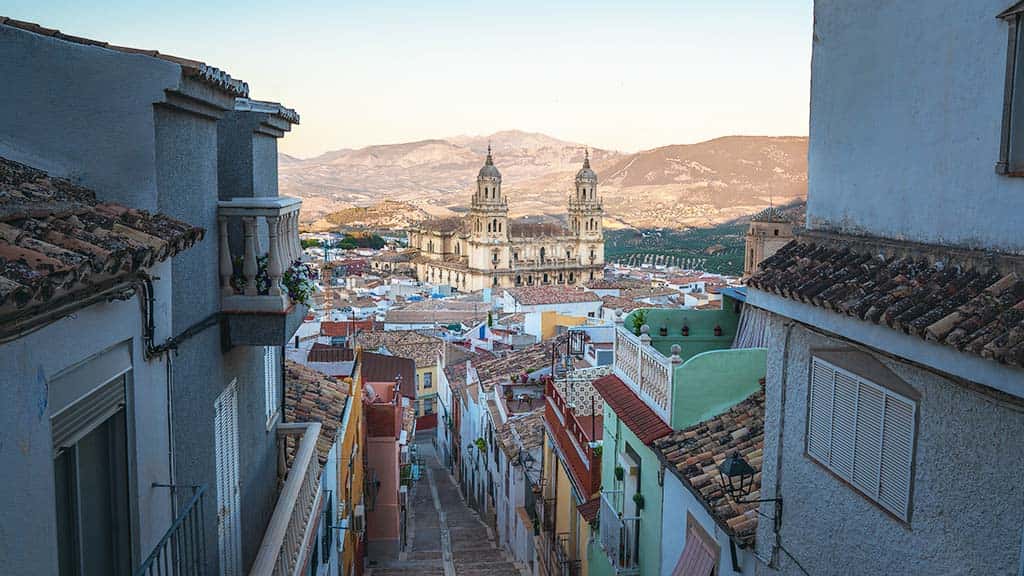
The city of Jaén in Andalusia is packed full of history and culture with a combination of sprawling olive groves on the outskirts and somewhat shabby architectural gems located in the center. The town focuses around the Santa Catalina castle that sits atop the main hill of the town, with winding streets and traditional houses draping down the hillside around it. From the castle, you can witness lush forests, green groves and the grand peaks of the Sierra de Jaen and Jabalcuz as well as some of the town’s famous monuments such as the Jaén Cathedral.
Other popular sites to enjoy while visiting Jaén include the Mercado Central de Abastos de San Francisco, the Centro Cultural Banos Arabes, the Jaén Museum and La Cruz.
14. Nerja
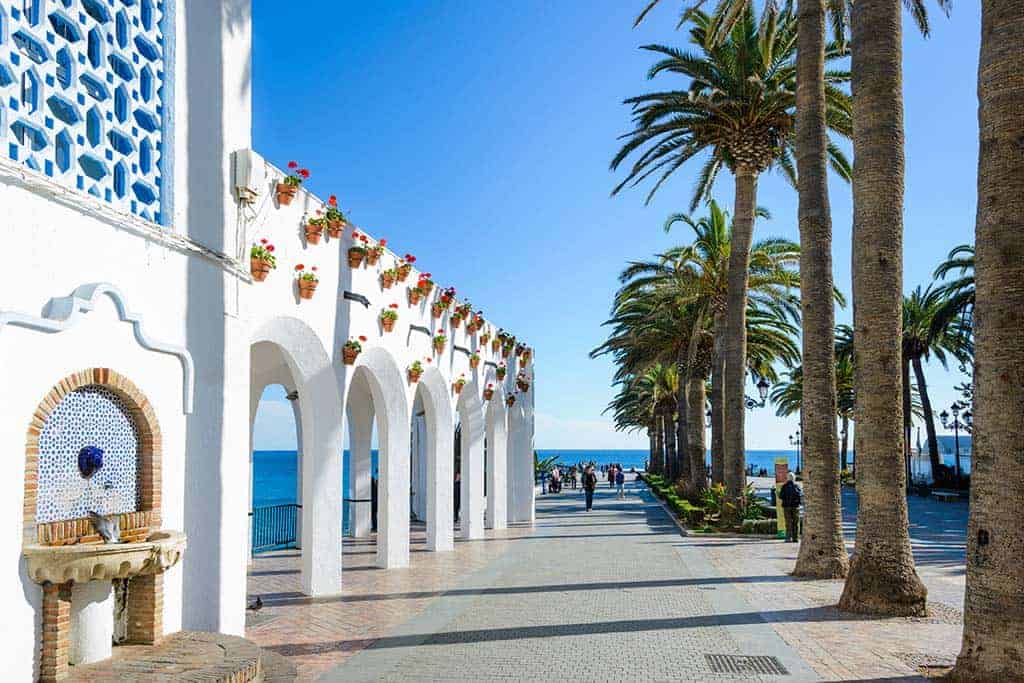
The coastal town of Nerja, located around 50km east of Málaga, has managed to protect the natural beauty of its coves by keeping the building’s low-rise so you can appreciate both the beach and the mountainous landscape behind. This old fishing village is now a popular tourist destination but thanks to its location at the very end of the Costa del Sol it has not been spoilt in the same way as some of the other larger resorts.
Nerja is best explored on the off-season (April-June and late-September onwards) so that you can truly enjoy the natural surrounds and the beaches without the crowds.
15. Tarifa
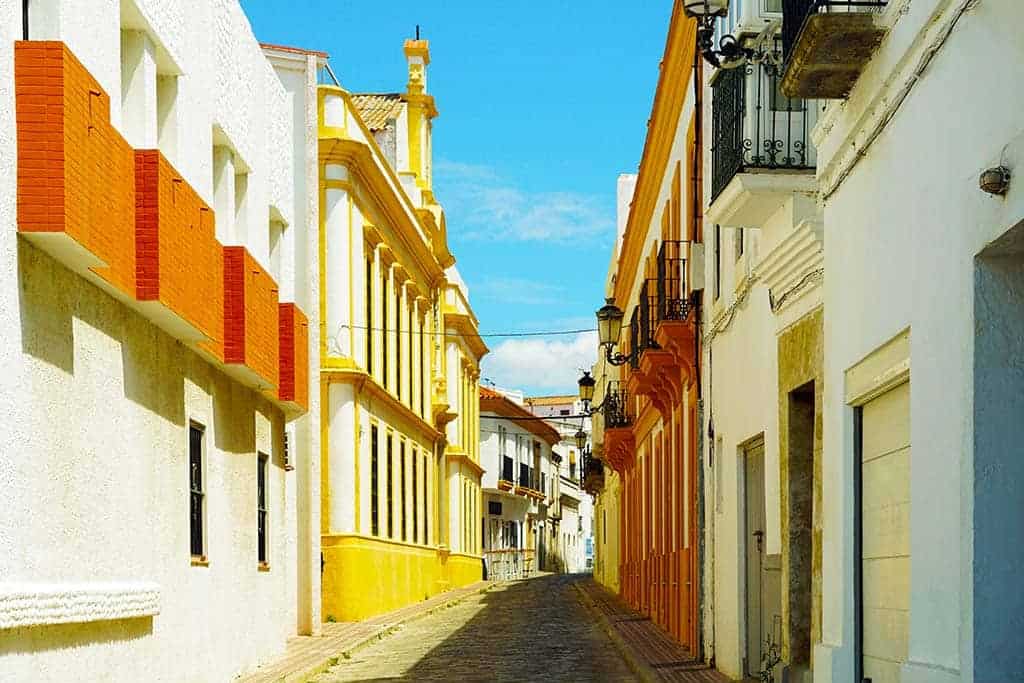
Located on the southern tip of Spain, Tarifa is the spot where the Atlantic and the Mediterranean meet giving it a different feel to the rest of Andalusia (both on and off the land). The climate here brings in strong winds from the Atlantic making it a popular spot for surfers, windsurfers and kite surfers as well as being a good location for whale and bird watching.
North Africa lies just 14km away across the Straits of Gibraltar and, on a clear day, you might be able to see the Rif Mountains from your bedroom window! The North African influence can be seen throughout the city, with the scent of Moroccan food floating through the air and the whitewashed streets making you feel as though you are in Essaouira!
16. Almeria

Almería is the most eastern city in Andalusia and is a popular tourist destination for those seeking stunning beaches, picture-perfect plazas, and ancient churches and sites that offer something for everyone. One of the most impressive attractions in Almería is the Moorish Alcazaba, the largest Muslim fortress in Spain. Built in the 10th century, La Alcazaba dominates the skyline of Almería City, with towers, fortification walls and lush gardens making for an imposing yet beautiful structure.
While Almería has gained much more popularity in recent years, it is still a slightly calmer spot than some of the other destinations along the Costa del Sol.
17. Doñana National Park

The Doñana National Park is a spectacular natural reserve in Andalusia that offers travelers something a little different to the region’s towns and beach destinations. The marshes, shallow streams and sand dunes here make it a haven for wildlife such as deer, wild boar, European badgers and even rare species like the Iberian lynx. As it is also a key crossroad for thousands of European and African migratory birds, it is considered one of the most important corridors of protected land in Europe.
If you’re a nature or wildlife lover then the Doñana National Park should be top of your list of places to explore in Andalusia.
So, there you have it, my list of the best destinations to visit in Andalusia. Each town, city and beach resort has its own character and charm so you can decide which destination will suit you and your travel style best. Let me know which is your favorite location in Andalusia in the comments below!
You might also like: A 10 road trip around Andalucia.

Seville is one of my FAVORITE cities in the world. Has been on my TOP 5 list for many years. Granada is also incredible…I plan to add to Cadiz and Ronda to my itinerary next time I’m in Spain. Great list!